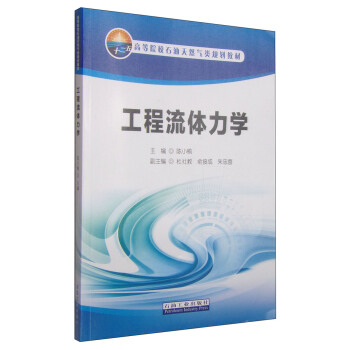

具体描述
编辑推荐
激光能量高度集中,而且便于操控,能够进行精细加工。正因为这样,激光加工技术的应用非常迅猛,已经形成了庞大的产业。同时,激光精确加工的技术本身也在蓬勃发展。作为详细讲述这一领域诸多方面的专著,《激光精确微加工(英文影印版)》对于国内相关领域的工程师和科学家,以及研究生来说都是不可多得的佳作。内容简介
小型化和高精度快速成为对很多工艺流程和产品的要求。因此,利用激光微加工技术来实现这一要求得到了广泛关注。《激光精确微加工(英文影印版)》内容有16章,覆盖了激光微处理技术的各个方面,从基本概念到在无机或生物材料上的工程应用。《激光精确微加工(英文影印版)》综述了在激光处理领域的研究和技术发展水平。读者对象为本领域的研究者和研究生。作者简介
杉冈幸次(K. Sugioka),日本理化学研究所(RIKEN)研究员。目录
Process Control in Laser Material Processingfor the Micro and Nanometer Scale Domains
Henry Helvajian
1.1 Introduction
1.2 Laser Processing
1.2.1 Laser Wavelength
1.2.2 Laser Power
1.2.3 Laser Dose
1.2.4 Laser Beam
1.2.5 Laser Pulse Temporal Profile
1.2.6 Pattern Generation
1.3 Possible Steps Forward
1.4 Conclusions
References
Theory and Simulation of Laser Ablation — from Basic
Mechanisms to Applications
Laurent J. Lewis and Danny Perez
2.1 Introduction
2.2 Basic Physics
2.2.1 Light—Matter Interaction
2.2.2 Material Removal from the Target:
The Basics of Ablation
2.3 Ablation in the Thermal Regime
2.3.1 Thermodynamics
2.3.2 Conventional Wisdom: Early Theories
2.3.3 A New Understanding
2.3.4 Computer Models
2.3.5 The Femtosecond Regime
2.3.6 Picosecond Pulses and Beyond
2.3.7 Molecular Solids
2.4 Materials Processing
2.4.1 Nanoparticle Production in Solvents
2.4.2 Damages and Heat Affected Zones
2.5 Conclusions and Perspectives
References
Laser Devices and Optical Systems for Laser Precision
Micro fabrication
4 Fundamentals of Laser—Material Interaction and Application to Multiscale Surface Modification
5 Temporal Pulse Tailoring in Ultrafast Laser Manufacturing Technologies
6 Laser Nanosurgery, Manipulation, and Transportationof Cells and Tissues
7 Laser Synthesis of Nanomaterials
8 UItrafast Laser Micro— and Nanostructuring
9 3D Fabrication of Embedded Microcomponents
10 Micromachining and Patterning
11 Laser Transfer Techniques for Digital Microfabrication
12 Hybrid Laser Processing of Transparent Materials
13 Drilling, Cutting, Welding, Marking and Microforming
Index
精彩书摘
《激光精确微加工(英文影印版)》:A number of laser processing research studies have pointed to the use of morepulses and lower fluences. Consequently, this has generated interest on exploringthe effects of tailored photon fluxes on materials processing. How might a desiredphoton flux be expressed for an application? One approach could be in the form ofprescribed information scripts in which relevant processing parameters are definedand can be implemented by appropriate light valve devices on demand [64]. For thesystem to operate efficiently, the light valves must be integrated with in situ feedbackfrom the photophysical event. This is likely to come via spectroscopic signaturesthat are sensed and analyzed for deciding the next course of action. The practicalquestion is whether a photon flux control system, such as described, could be realized when operating at near real time processing speeds. The analysis is easier to dofor a direct-write patterning tool. Assume a processing laser with 50 MHz repetitionrate (pulses separated by 20 ns) that is brought to a 1 um (dia) focus on a target.Assume also that the patterning tool can move at a hefty speed of 1 m/sec (e.g.,Aerotech Corp. ABLS000 air bearing stage) which means that the patterning toolcan service 106 spot-sizes/sec. At the maximum velocity, the average time the patterning tool spends over a single spot-size is 1 us. There are now optical sensors withsubnanosecond response times and typical electrical signal transfer times in common cabling run about 3 ns/m. Microprocessor speeds have significantly evolved inthe past 15 years with the 2007 PC CPU tests showing the Intel CORE 2 ExtremeQX6800 processor capable of over 37 GFLOPS (Giga FLoating point OperationsPer Second). Finally, in the early 1990s, there was literature on acousto-optic modulators (e.g., Ti:LiNbO3) with bandwidths near 20 GHz [70] and current analog todigital convertors (ADCs) can operate up to 2 G samples per sec (e.g., Delphi Engineering ADC3244: 2GSPS, 10 bit accuracy and an integral field programmable gatearray). Given this information and the fact that for this example the average durationof time spent over a single spot-size is 1 us, it becomes possible to assemble a control system whereby information from a sensor is analyzed by the microprocessor(e.g., for GO/NO-GO or via a complex decision tree), and this information is sentto a light switch which either adds or subtracts extra laser pulses accordingly.
……
前言/序言
用户评价
这本书的封面设计得相当有质感,封面的字体选择和排版都透露着一种严谨的学术气息,让人在第一时间就感受到它并非泛泛之作,而是深入某一特定技术领域的专业书籍。我注意到书脊上的字体经过特殊处理,即使在书架上也能清晰辨认,这对于需要频繁查阅工具书的读者来说是个很贴心的细节。内页的纸张选择也比较考究,不是那种反光严重的亮面纸,阅读起来眼睛负担小很多,即使长时间盯着图表和公式看,也不会有明显的疲劳感。装帧的质量看起来也很扎实,线装的设计保证了书籍可以平摊开,这在阅读涉及复杂电路图或精密仪器结构分解图时尤其重要,不用费力去按住书页。而且,影印版的清晰度出乎意料地高,文字边缘锐利,没有出现模糊不清或者墨迹不匀的情况,这对于精确性要求极高的技术文献来说是至关重要的,确保了信息传递的准确无误。整体而言,从物理形态上,它就成功地建立起一种专业、耐用且易于使用的工具书形象。
评分这本书的章节逻辑组织得异常清晰,作者似乎非常懂得如何引导初学者进入复杂的知识体系。开篇部分并没有直接跳入晦涩的物理模型,而是用了一个非常宏观的视角来梳理整个微加工领域的发展脉络和它在现代工业中的战略地位,这种“先搭骨架,再填血肉”的叙事方式极大地降低了阅读的心理门槛。随后,每一个章节的标题都像一个清晰的路标,指引着读者精确地找到自己当前感兴趣的技术点。我特别欣赏的是,在介绍每一种具体的加工原理时,作者都会先用通俗易懂的语言进行概念性的阐述,紧接着才是严谨的数学推导,这种递进式的讲解结构,让那些对理论基础稍感薄弱的读者也能逐步跟上节奏。而且,章节之间的衔接处理得非常平滑,不同技术路线的过渡自然而然,让人感觉整个领域是一个有机整体,而非零散知识点的堆砌。这种高度的结构化处理,使得这本书不仅适合系统学习,也非常适合作为快速检索参考手册来使用,需要查阅特定参数或工艺流程时,定位速度极快。
评分书中对理论模型的阐述深度和广度令人印象深刻,这绝不是一本停留在表面介绍的入门读物。它深入挖掘了核心物理机制,特别是涉及到能量耦合、材料响应以及非线性效应的讨论,分析得极其透彻。例如,在处理激光与物质相互作用的瞬态热力学问题时,书中不仅给出了常用的有限元分析框架,还详细讨论了边界条件设定的敏感性,甚至引用了一些最新的数值模拟结果来佐证理论预测的有效性范围。更难能可贵的是,书中对于不同波长、不同脉冲宽度激光源在相同材料上的加工差异,进行了细致的横向对比分析,这些对比往往是实验室研究中最容易被忽略但实际应用中又至关重要的细节。书中引用了大量一手研究文献,参考文献部分的列表本身就构成了一个高质量的拓展阅读索引,显示出作者深厚的学术积累和对领域前沿的把握。对于希望进行深入理论研究或工艺优化的人士来说,光是这些详尽的理论背景和参数讨论,就已经值回票价了。
评分插图和图表的质量是衡量一本技术书籍实用性的重要标准,而这本著作在这方面做得非常出色,达到了教科书级别的严谨性。大量的流程图、结构示意图,以及最重要的——加工结果的截面图和显微照片,都以极高的分辨率呈现。我注意到很多示意图都采用了三维视角,清晰地展示了光束的聚焦特性和加工区域的几何关系,这比单纯的二维截面图更能帮助读者建立空间想象力。特别是一些关于光束整形和控制系统的图示,不仅标明了关键组件的相对位置,还用箭头和符号清晰地指示了能量流动的方向和转换过程,极大地简化了对复杂光学布局的理解。此外,数据图表的横纵坐标标注清晰,单位统一规范,图例解释一目了然,使得读者在进行数据对比和趋势判断时,可以最大限度地减少对图表解读的认知负荷。可以说,这些图表不仅仅是文字的辅助,它们本身就是一种高效的知识载体,极大地提升了工程实践的可操作性。
评分本书的实用性体现在对工程实践中常见问题的深刻洞察和解决方案的系统性梳理上。它不仅仅停留在“是什么”的层面,更是大量篇幅用于探讨“如何做”和“为什么会失败”。在故障诊断那一章,作者列举了包括热影响区过大、表面粗糙度不达标、微裂纹产生等一系列典型的加工缺陷,并系统地追溯了导致这些缺陷背后的工艺参数组合或设备局限性。更贴心的是,书中还穿插了一些“最佳实践”和“工艺窗口”的讨论,这些经验性的总结往往是实验工程师们需要花费数月时间才能摸索出来的宝贵财富。例如,对于特定硬脆材料的切割,书中提供了一个基于能量密度和扫描速度的初步筛选矩阵,这对于快速启动新材料的工艺开发项目具有即时指导价值。这种从基础理论到工程应用的无缝对接,使得这本书对于从事研发、工艺工程师以及相关技术管理人员来说,都是一本不可多得的,能够快速将知识转化为生产力的参考宝典。
评分111111111111111111
评分111111111111111111
评分111111111111111111
评分111111111111111111
评分111111111111111111
评分111111111111111111
评分111111111111111111
评分111111111111111111
评分111111111111111111
相关图书
本站所有内容均为互联网搜索引擎提供的公开搜索信息,本站不存储任何数据与内容,任何内容与数据均与本站无关,如有需要请联系相关搜索引擎包括但不限于百度,google,bing,sogou 等
© 2025 book.coffeedeals.club All Rights Reserved. 静流书站 版权所有


![现代仪器分析原理与技术 [Principle and Technology of Modern Instrument Analysis] pdf epub mobi 电子书 下载](https://pic.windowsfront.com/11615913/5ab86104Nbdacec3d.jpg)







![基于POM的浪流耦合模式的建立及其在大洋和近海的应用 [The Establishment Of The Wave-Circulation Coupled Model Based on POM And Its Applications In The Ocean And The Coastal Sea] pdf epub mobi 电子书 下载](https://pic.windowsfront.com/11795760/5641c460Nfb8a3e1f.jpg)
![高中数学教学的若干思考 [Some Thoughts On The Senior High School Mathematics Teaching] pdf epub mobi 电子书 下载](https://pic.windowsfront.com/11867002/56c5beafNa00f80d3.jpg)
![大气化学动力学 [Atmospheric Chemistry Kinetics] pdf epub mobi 电子书 下载](https://pic.windowsfront.com/11903109/570f6752Nfe7da822.jpg)







![中国人类学评论(第6辑) [Chinese Review of Anthropology] pdf epub mobi 电子书 下载](https://pic.windowsfront.com/10175825/f997b661-228c-410f-985e-2812eb89570a.jpg)